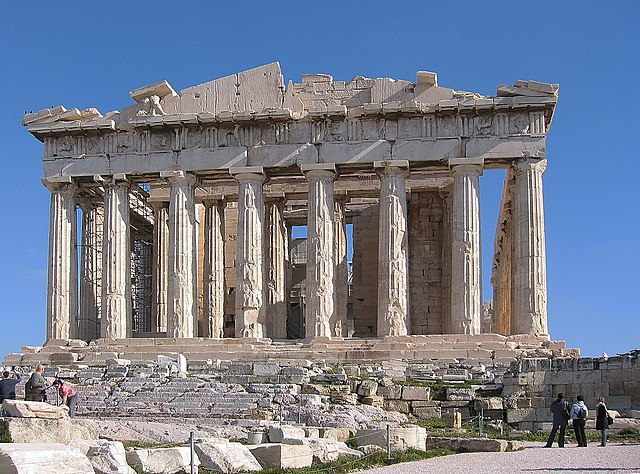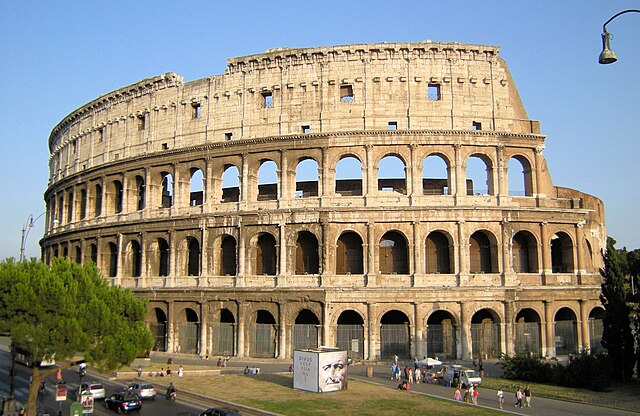Late antiquity is sometimes defined as spanning from the end of classical antiquity to the local start of the Middle Ages, from around the late 3rd century up to the 7th or 8th century in Europe and adjacent areas bordering the Mediterranean Basin depending on location. The popularisation of this periodization in English has generally been credited to historian Peter Brown, who proposed a period between 150–750 AD. The Oxford Centre for Late Antiquity defines it as "the period between approximately 250 and 750 AD". Precise boundaries for the period are a continuing matter of debate. In the West, its end was earlier, with the start of the Early Middle Ages typically placed in the 6th century, or even earlier on the edges of the Western Roman Empire.
The Barberini ivory, a late Leonid/Justinian Byzantine ivory leaf from an imperial diptych, from an imperial workshop in Constantinople in the first half of the sixth century (Louvre Museum)
Late 4th-century Roman bust of a Germanic slave in Augusta Treverorum (Trier) in Belgica Prima, seat of the praetorian prefecture of Gaul (Rheinisches Landesmuseum Trier)
Modern statue of Constantine I at York, where he was proclaimed Augustus in 306
The Favourites of the Emperor Honorius, 1883: John William Waterhouse expresses the sense of moral decadence that coloured the 19th-century historical view of the 5th century.
Classical antiquity, also known as the classical era, classical period, classical age, or simply antiquity, is the period of cultural European history between the 8th century BC and the 5th century AD comprising the interwoven civilizations of ancient Greece and ancient Rome known together as the Greco-Roman world, centered on the Mediterranean Basin. It is the period during which ancient Greece and ancient Rome flourished and had major influence throughout much of Europe, North Africa, and West Asia.
The Parthenon is one of the most recognizable symbols of the classical era, exemplifying ancient Greek culture.
The Colosseum, a prominent symbol of the Roman classical era and culture






